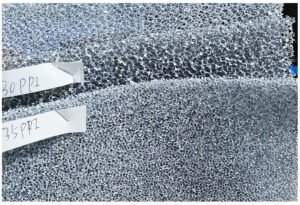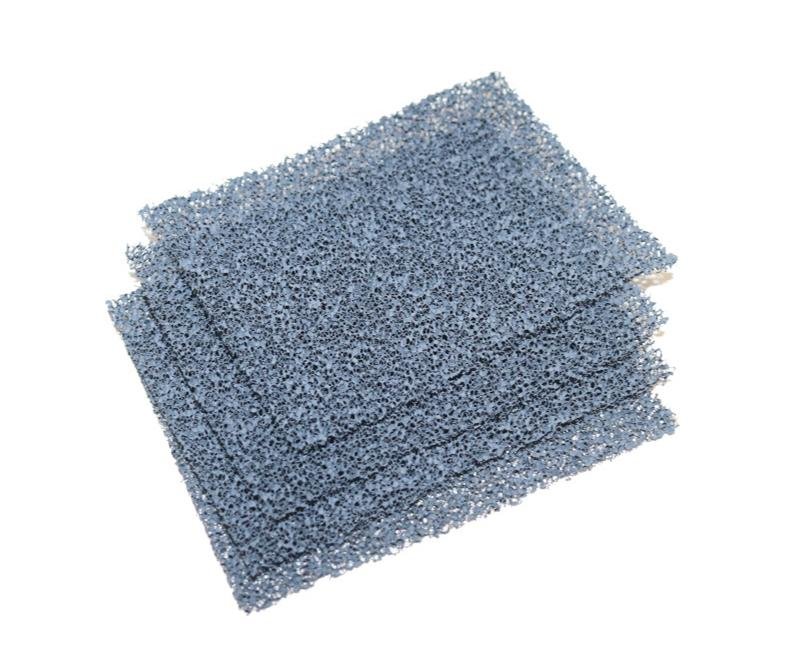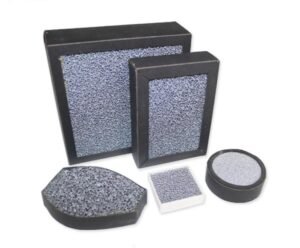Photocatalyst Filter Sponge is an advanced filtering material that combines porous sponge structure with photocatalytic technology (typically using TiO2/Titanium Dioxide) to purify air or water by breaking down pollutants at the molecular level.

Key Features & Benefits of Photocatalyst Filter Sponge:
- Self-Cleaning & Antibacterial
- Uses UV/sunlight activation to decompose organic contaminants (bacteria, viruses, mold).
- Prevents microbial growth, reducing maintenance needs.
- Eliminates Harmful Pollutants
- Breaks down VOCs (formaldehyde, benzene), odors, smoke, and allergens.
- More effective than traditional activated carbon filters.
- Long-Lasting & Eco-Friendly
- Does not require replacement as frequently as conventional filters.
- Chemical-free purification process.
- Versatile Applications
- Air Purifiers & HVAC Systems – Improves indoor air quality.
- Refrigerators & Food Storage – Reduces ethylene gas and spoilage.
- Automotive Cabin Filters – Removes exhaust fumes and odors.
- Water Filtration – Degrades organic impurities in aquariums/industrial water.
Comparison vs. Regular Filters:
| Feature | Photocatalyst Sponge | Traditional Filter |
|---|---|---|
| Lifespan | 2-5 years (reusable) | 3-6 months |
| Antibacterial | Yes (self-sterilizing) | No (breeds bacteria) |
| Eco-Impact | Low (no frequent disposal) | High (landfill waste) |
| Odor Removal | Permanent breakdown | Temporary masking |
How Photocatalyst Filter Sponge Works
Photocatalyst Filter Sponge uses light-activated nanotechnology to break down pollutants, bacteria, and odors at the molecular level. Here’s a step-by-step breakdown of its working mechanism:
1. Key Component: TiO₂ (Titanium Dioxide) Photocatalyst
The sponge is coated with nano-sized titanium dioxide (TiO₂), a semiconductor material that reacts when exposed to UV or visible light.
2. Light Activation Process
When light (sunlight, UV, or LED) hits the TiO₂-coated sponge:
- Photons excite electrons in TiO₂, creating electron-hole pairs.
- These generate Reactive Oxygen Species (ROS), including:
- Hydroxyl radicals (·OH) – Extremely powerful oxidizers
- Superoxide anions (O₂⁻) – Break down organic compounds
3. Pollutant Breakdown Mechanism
The ROS attack and oxidize organic pollutants, converting them into harmless substances:
| Target Pollutants | Breakdown Result |
|---|---|
| Bacteria/Viruses | Cell walls destroyed → CO₂ + H₂O |
| VOCs (Formaldehyde, Benzene) | Oxidized into CO₂ + H₂O |
| Odors (Ammonia, Smoke) | Broken down into non-toxic gases |
| Mold & Allergens | Organic structures decomposed |
4. Self-Cleaning & Regeneration
Unlike conventional filters that trap pollutants, the photocatalytic reaction:
- Continuously decomposes contaminants instead of accumulating them.
- Prevents bacterial growth (no biofilm formation).
- Maintains efficiency without frequent replacement.






